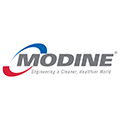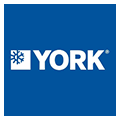This article summarizes GAO Tek’s anemometers and how they serve multifaceted roles across the HVAC industry, contributing significantly to maintaining indoor air quality, energy efficiency, and occupant comfort in various settings worldwide. Practical examples of anemometer use in the HVAC industry include assessing airflow in office buildings, hospitals, manufacturing facilities, schools, hotels, malls, data centers, homes, greenhouses, museums, and factories across various locations globally. These applications involve tasks such as ensuring comfort, minimizing infection risks, optimizing ventilation, maintaining energy efficiency, and complying with regulations. From New York City to London, anemometers play a crucial role in evaluating and regulating airflow and temperature distribution in diverse settings, ensuring optimal indoor conditions for occupants while maximizing energy efficiency and adhering to ventilation standards.
The HVAC (Heating, Ventilation, and Air Conditioning) industry is pivotal in regulating indoor climate and air quality across residential, commercial, and industrial spaces. GAO Tek’s anemometers, known by various names like wind gauges and air flow meters, serve diverse roles within this sector:
Airflow Balancing: Ensuring even temperature distribution by regulating airflow within HVAC systems.
Ventilation System Assessment: Evaluating ventilation performance to maintain optimal indoor air quality.
Filter Efficiency Testing: Assessing filtration system effectiveness for removing airborne particles.
Ductwork Testing: Measuring air velocity and flow rates within ducts to optimize their efficiency.
HVAC System Efficiency: Evaluating system performance to enhance energy efficiency.
Troubleshooting and Maintenance: Detecting issues within HVAC systems for timely repairs.
Occupant Comfort: Contributing to a comfortable indoor environment by regulating air circulation.
Cleanroom Airflow Analysis: Maintaining sterile conditions in critical environments like cleanrooms.
Cooling System Evaluation: Measuring air velocity across cooling coils for optimal cooling.
Energy Efficiency Assessments: Identifying areas for optimizing HVAC systems for energy efficiency.
To read the full article, please click here



















